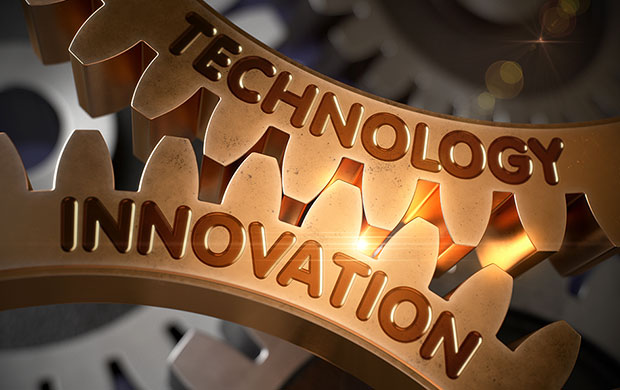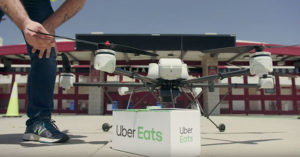I’m giving myself extra wiggle room because we know things rarely happen as fast as we think or progress as slowly as we hope. We all thought we’d have flying cars by the end of last century, for instance, but we are due to be up to our armpits in them by the end of next decade if the impressive number of trials continue to go well.
I’ll close with my product of the week: my favorite laptop.
1. Drone Drop Spots
I touched on the drone drop issue a little last week, and I have been thinking about it ever since. With the advent of drone deliveries, we need a safe place to drop packages. For homes, the roof would be best because it generally has clear airspace above, it is sturdy in case the package drops prematurely, and it is a ton more secure than a driveway, lawn or porch.
It’s also far safer than trying to get a drone to land on a balcony or navigate through an open window (and safer for pets as well, because none of us want to come home to a pet injured by a drone or as a result of tying to catch one).
The best companies to do this would be firms that already know how to penetrate the roof safely. I’m thinking firms like Solatube, because the product could be as simple as a roof-mounted chute that would curve and have water drainage at the low point. This would allow the package to roll down to a padded area in an insulated chute arriving in a secure holding area where your package(s) would be safe until you returned.
Multitenant buildings could have tenant-only accessible areas with cameras on the top floor where packages could be picked up.
2. Autonomous Ride-Sharing Car Harbor
Autonomous cars are in the works to take the place of services like Uber and Lyft — but where will these cars go to standby and charge? (Most likely will be electric.) If they haven’t already, I have no doubt that the firms thinking of building out this solution will realize that parking structures may become a competitive advantage and will start buying up and retrofitting them for this use.
The firm with the most local cars likely is going to get the most riders in a region, and firms that don’t have their own parking may find themselves banned from cities trying to control traffic and limit bad behavior, like double parking, at scale.
Cars will go in, charge, and then deploy as needed, staying off the street when they don’t have riders except on the way to pick them up or return from dropping them off. These standby, charging and wait points will be critical to the success of the autonomous ride-sharing car effort.
3. Autonomous Plane Sky Harbor
A bigger problem is the coming group of autonomous flying vehicles. They can’t use existing structures, except maybe on roofs, and those won’t handle the kind of volume traffic that Uber likely anticipates with its coming service.
For these you’ll likely need purpose-built structures that safely can receive and then deploy these autonomous flying vehicles, which some mistakenly call “flying cars.” (If it just flies, it isn’t a “car” — it is something else.)
Given the limited range of these things and the necessary safety envelope for that range, bringing them in from remote areas would both reduce the benefit of timeliness and increase the chances of a catastrophic failure in transit massively, as well as lower the time in service for the vehicles.
Flying vehicles likely will need a storage/charging area kind of like aviaries. One source of inspiration for builders could be Japanese science fiction anime. Its artists have been particularly creative with this problem. (This clip is pretty amazing.)
4. Autonomous Traffic Control
There are going to be some interesting problems with autonomous vehicles at scale that peer-to-peer navigation can’t address. What happens, for instance, if a passenger has a medical emergency, or if a vehicle gets hacked or goes rogue due to some technical problem?
A centralized deep learning artificial intelligence could take control of the vehicle, fire up and look through its interior and exterior sensors, and mitigate the risk, but initially it is likely that a human will be called on first to do the job and then oversee it to make sure the AI makes the right decisions.
However, I truly doubt that human dispatchers, given the historic problems and delays surrounding this limited resource, will be able to act both fast enough and comprehensively enough.
For instance, say a man decided to go from San Francisco to LA and sleep in the car. On the trip he has a heart attack. Sensors in the car would need to pick that up — otherwise it’s going to arrive with a dead passenger. The car would need to be redirected, given a priority lane, and taken to max speed while an emergency response was scrambled. Closing speeds could exceed 300 miles per hour (EMTs and the vehicle going in opposite directions), putting response within around 10 minutes from most anyplace in the country. That’s one scenario.
Realize that autonomous vehicles would be excellent explosive delivery platforms, too, and the related threat would need to be identified and mitigated in seconds, particularly if it should involve an autonomous flying vehicle (a poor man’s cruise missile).
Some central service is going to need to coordinate responses across a variety of services and resources at computer speeds, once a problem is identified.
5. Biometrics Identity-Theft Protection
I get a kick out of efforts to try to protect people from privacy violations by limiting facial scanning. The thing is, if your picture is up someplace on social media, chances are it already has been scanned and linked to personal data. Those cows not only have left the barn — they have left the state, so closing that barn door likely will not do any good.
In a recent case, a college student was arrested because someone stole his credit card number and the system identified the crook’s image with the student’s name, connected the student — rather than the crook — to a number of crimes.
Right now, there is no easy way even to find out if you are misidentified in the criminal identification systems, let alone fix the problem. Credit monitoring services like Experian help address stolen digital identities. We will need them to expand (the likely path) to biometric hacks, or we’ll have to wait for new services focused on the compromise and correction of misidentified biometric data. Otherwise a lot of us wrongly will end up on no-fly lists or arrest site lists.
Realize there is a pretty good chance that while the systems in place can recognize that they have connected the wrong image to the name, their fix might be only to disassociate the image, not correct it. They would fix the picture but still associate you with the crime.
6. AI Life Manager
We are quickly getting to the point when all the services we subscribe to are becoming an unmanageable and exceedingly expensive. You probably have several music and video streaming services (I do) with overlapping and redundant libraries; identity protection services provided by your credit card companies and third parties; service contracts from different providers on your appliances and vehicles that might be more cheaply handled by one firm; and insurance from a variety of vendors, none of which will protect against your next most likely claim.
Managing our lives has become like managing a company. With little or no training, you may be getting overwhelmed by all the services — many, if not most, of which you rarely or never use, and may never need.
This suggests we soon will need an overarching service that helps us optimize our spend, makes sure we have what we need when we need it, without massively overspending for things we’ll never need, and that understands our goals and works to further them.
This service could handle commitments like taxes, aggregate alerts, and provide direction regarding what to do with them, ensuring our piece of mind without requiring we commit our mental resources to these ongoing issues. Basically, we’ll need our digital assistants to grow up and be like Tony Stark’s Jarvis.
Wrapping Up
This is likely only the tip of the iceberg, because we quickly will be surrounded by increasingly intelligent products — some that have our best interests at heart and some that want to scam us.
The issues with deep fakes, fishing by increasingly intelligent systems, the proliferation of smart robots, and redundant services will continue unabated. In a few short years we are going to need to deal with these changes in more than the existing ad hoc fashion, and actually get ahead of problems like what to do with dormant autonomous vehicles, and where to allow drones to drop the packages they deliver safely and securely?
We have tons of disruptive products and services, but few are doing gap analysis to figure out what new things will be critical to this new world. I’ve listed six, but I’ll bet you can think of more. The next Bill Gates or Elon Musk likely is working on one or more of these things already. What are you working on?
I made the HP Spectre Folio the product of the week when I first got it several months back, but I realized last week that it is by far my favorite notebook computer. I have notebooks from all the major vendors but, while not yet perfect, the Folio has become the one notebook I grab most often.
This is because it morphs into a usable tablet, a great movie player on planes (thanks to Movies Anywhere) and a decent e-book reader, and it is always connected. I find that often I can leave my backpack, charger and Kindle Fire tablet behind and just carry this laptop, which has been doing wonders for my back. (My backpack, loaded, is impressively heavy.)

There are some things I’d like to see improved. It now comes in brown and burgundy (the 70s would like their colors back) and I’d prefer black. I’d prefer that it use the Qualcomm Always Connected platform for longer battery life (or have a charger that’s easier to pocket), and that it have a higher nit (more light) screen for outdoor use.
Even without these corrections, this leather-covered baby is just a ton easier and better to carry than any other product I currently have access to.
For instance, I had to do a day trip to San Francisco last week. I was in coach on a small jet, but I could cantilever the screen so that I could watch movies, while the poor woman next to me was trying the same thing on her little smartphone. I flipped it to the side to read for a while in tablet mode, and when needed, I was able to catch up with email and do research on the Web while in 4G cellular service.
Now I know a number of my peers have come to love this thing as well, and that is pushing the other OEMs to create similar products that potentially are even more advanced (and probably will come in black rather than burgundy). However, until then the HP Spectre Folio is my favorite and my product of the week. This thing is AWESOME!


























































Great article! Like the laptop too, versatile to say the least. Will it play 4K? Also the 10 things were cool.
Yes, it has a 4K display. Glad you liked the piece.